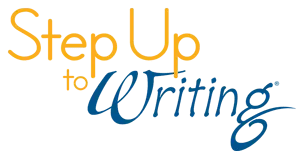Boost Classroom Engagement with Anticipatory Sets
Engaging students in the classroom is crucial to creating a successful and meaningful learning experience. When students are actively engaged, they are more likely to participate in class discussions, develop critical thinking skills, and retain information. One effective way to boost student engagement is through the use of anticipatory sets.
Madeline Hunter was an American educator who helped make anticipatory sets a staple in lesson planning. She coined the term “anticipatory set” in the 1960s as part of her lesson plan model model that many classrooms around the world still use today. Her model is used in elementary, middle, and high school alike, and all grade levels have been able to benefit from anticipatory sets as a way to kick off a new lesson. When used effectively, they can set the tone for the lesson, establish relevance, and increase student motivation.
What Are Anticipatory Sets?
Anticipatory sets are activities employed at the start of a lesson to capture student attention and pique their interest in the lesson plan for the day. When planning a lesson, teachers often begin by defining the learning objectives. An effective anticipatory set can then serve as the students’ introduction to the lesson, shaping their initial impressions and thought processes about the content to be covered.
Anticipatory sets often act as bridges in learning. For example, it can be a bridge between different lessons when activating prior knowledge, or it can be a bridge between a student and the curriculum when generating interest and drawing real-world connections. Research has shown anticipatory sets can have a positive impact on student learning and engagement. When students are actively engaged at the start of a lesson, they are more likely to pay attention, participate in class, and retain information.
Why Use Anticipatory Sets?
Anticipatory sets are a valuable teaching strategy to increase student engagement and prepare them for learning. The sets, also sometimes referred to as set induction, are a vital first step of each day’s lesson.
There are many reasons why teachers should consider using anticipatory sets in their lesson planning. The overall goal is to engage students, but each activity may have a specific purpose within the umbrella of engagement that can be tailored to fit the connection to the lesson.
Activate Prior Knowledge
One great use for anticipatory sets is to activate prior knowledge. This way, teachers can prepare students for learning and increase students’ confidence and motivation, thus making them more engaged in the lesson. If a student feels confident, they already have some connection or insight into the lesson, they may retain more learning.
This may be a quick review question from a previous lesson to transition into the upcoming lesson, or this may be more detailed, like using advance organizers to access background knowledge students have learned.
Generate Interest
Another name for an anticipatory set is a “hook.” The idea of generating interest in a lesson or topic is important to provide students with a connection to the curriculum in a fun and positive way. Generating interest at the beginning of a lesson has the potential to increase engagement and decrease behavior problems because students are more connected to what is coming next.
Set the Tone
Anticipatory sets have the ability to set the tone for a lesson. While they are often used to create a fun and positive learning environment, they can also be used with a more serious tone or topic. For example, playing a game as an anticipatory set before a math lesson will have a different tone than looking at somber images before a history lesson.
Improve Retention
Studies have shown when students are engaged and enjoying what they are learning, they are more likely to retain that information. Therefore, anticipatory sets help improve retention because they not only help students focus on the lesson, but they also build meaningful connections between the student and curriculum.
Differentiate Instruction
Anticipatory sets can help differentiate instruction by providing a flexible and adaptable way to engage students and prepare them for learning. For example, anticipatory sets can involve an element of choice that accommodates diverse learning styles and challenge levels. This is also a step where teachers can take a moment to personalize learning to students’ interests or experiences.
How to Create Anticipatory Sets
Anticipatory sets may range in style and detail, but there are five main steps for planning and implementing them. Creating effective anticipatory sets requires careful planning and consideration of the students’ learning needs and interests, along with a little bit of creativity.
Confirm the Learning Objective
The first step to creating an anticipatory set is to identify what students will be learning over the course of the lesson. Consider what skills or knowledge students will acquire, and use the learning objectives to guide you throughout the lesson planning process.
Consider Your Audience
Consider the age, interests, and learning styles of your students. This will help with designing an anticipatory set that is engaging and relevant. The activity should be engaging and challenging, but not so difficult that it potentially discourages them.
Choose a Purpose
As mentioned, there are many uses for anticipatory sets. Decide whether the main need or goal is to activate prior knowledge, generate interest, set the tone, improve retention, or differentiate instruction. This may determine which type of activity is chosen.
Create the Activity
Finally, choose or develop an activity that aligns with your chosen purpose and learning objective. Gather materials you will need for the activity, such as visuals, handouts, or props. Make sure everything is organized and ready to go at the start of the lesson.
Anticipatory Sets in Action
Anticipatory sets are versatile teaching strategies that can be used across a variety of subjects and grade levels. There are a number of anticipatory building blocks that can be used or combined to find what works best for certain subject matter or ages.
Science
Science is such a wonderful hands-on subject, and anticipatory sets can be hands-on as well.
For example, if the topic is magnetism, the teacher can instruct students to spend a few minutes playing with magnets to explore the properties of magnetic fields. Teachers may also do a demonstration or an experiment to generate curiosity.
Mathematics
Math involves a lot of logic and patterns, so riddles or puzzles can often be a good way to hook students at the beginning of a math lesson. Math puzzles can not only be fun for students, but they can also encourage critical thinking.
Teachers may also use real-world connections as anticipatory sets in math to get students thinking about how math connects to the real world. For example, teachers may have students think about their favorite recipe before teaching a lesson about fractions or think about what they buy regularly before a lesson about budgeting.
History
One way to bring history class to life and create anticipation for a lesson is with the use of visual aids. For example, if the topic is World War II, the teacher could show a photograph or a map illustrating key events of the war. If the topic is the Civil Rights Movement, the teacher could show video clips depicting the key events and personalities of the movement.
Another great anticipatory set for a history lesson is a KWL chart. KWL stands for “Know,” “Want to know,” and “Learned.” Before a lesson begins, students can fill out the K column of their chart for what they already know about the topic, such as things they have learned in the past or heard from family members. Then, after a brief discussion, about what students already know, students can fill out the W column for things they want to know about the topic. This makes students engage in critical thinking by having them ask questions. After the lesson, students can return to their chart and finish the L column with what they learned.
Language Arts
There are many ways to use anticipatory sets in a language arts class to engage students before a lesson. One classic activity involves anticipation guides, which have students read several statements relating to the themes or plot of a text and decide their level of agreement with the statement.
Teachers could also use a game like Pictionary or charades to relate to characters or texts before a lesson involving reading comprehension. If the lesson for the day is related to poetry, the teacher could begin with a quote or a song related to the poem. Finally, starting a language arts lesson by reading a picture book can actually work with almost any grade level. Sometimes bringing older students back to strategies used in elementary school can help with engagement through nostalgia.
Art
Because art is such image-based content, visuals should be used to pique student interest. The teacher could begin the lesson by showing a famous work of art related to the topic. For example, if the topic is color theory, the teacher could show a painting illustrating the use of color in art. If the topic is sculpture, teachers can also show a more interactive video demonstrating the techniques used in sculpting.
For a more hands-on activity, teachers can allow students to interact with a piece of clay to see what it feels like. Allowing students to interact with materials in a more low-stakes environment before beginning a project can give them confidence when it comes to creating a final piece of art.
Anticipatory Sets and Differentiated Instruction
Anticipatory sets can be used as part of a differentiated instruction approach to get students to become engaged and activate their prior knowledge. Carefully considering certain anticipatory activities can help serve students with a variety of educational challenges, such as those with disabilities like dyslexia and English language learners. Anticipatory sets can be tailored to meet the needs of these diverse learners, and this tailoring can be done at the content, process, or product levels.
Differentiated Content
Differentiated content involves the information, ideas, and skills within the curriculum students will need to work with to reach the learning goals. Any strategies that provide students with choices will allow them to gravitate toward the type and challenge level of material they are most comfortable with.
Differentiated Process
Differentiated process involves the activities students will participate in as they attempt to make sense of or understand the information. Anticipatory sets that include activities targeting auditory, visual, and kinesthetic learners can allow all different types of students to be drawn into the lesson.
Differentiated Product
Finally, differentiated product involves the final, tangible element that reflects student understanding. This may be something as simple as a short worksheet or verbal answer to a question, but it can also be more creative or formal.
Conclusion
We all know the feeling of anticipation and how it can draw us into a topic or moment. It is the reason the entertainment industry creates movie trailers. Anticipatory sets are like the movie trailers of the classroom. They have many useful benefits, can be created in a few simple steps, and can be used in any classroom.
At Voyager Sopris Learning®, our programs use anticipatory sets in a variety of ways, such as the club characters in our newly revised Step Up to Writing® program for the newest grade band, K–2, or built into LANGUAGE! Live®, a program that engages adolescents in grades 5–12 with proven literacy instruction for increased proficiency. While every anticipatory set might not have the budget or theatrics of a Hollywood movie trailer, a little bit of creativity and effort can make all the difference in starting off a lesson on the right foot.

